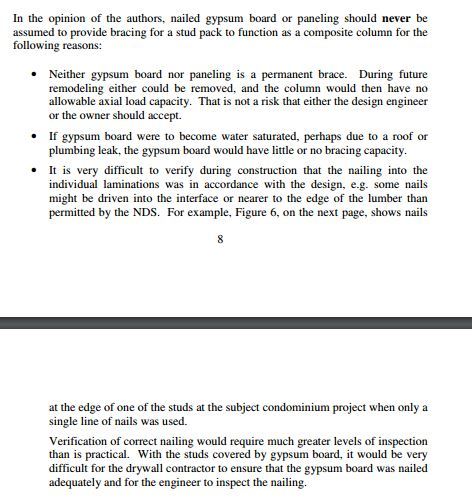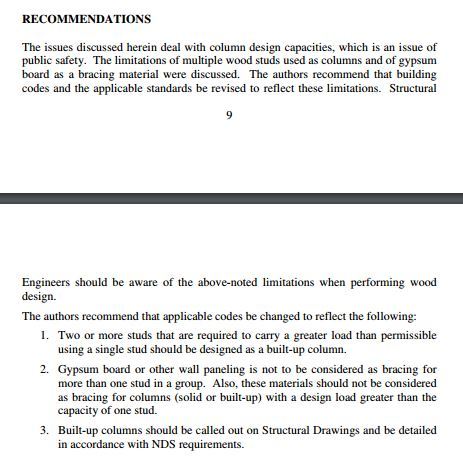StructENG82
Structural
I am trying to determine if I use a built-up column in a wall to support a beam load do I need to fasten the individual plys together per NDS chapter 15.3. I am trying to determine if the 1/2" plywood sheathing on either side of the built-up member that has been noted to be fastened to each ply with nails at 12" o.c. (staggered) precludes me from having to follow the the built up fastening in NDS. The specific requirement I reference is side nailing of built up the built up member with nails that penetrate 3/4 of the thickness of the last lamination.
Any help would be appreciated, thanks.
Any help would be appreciated, thanks.


